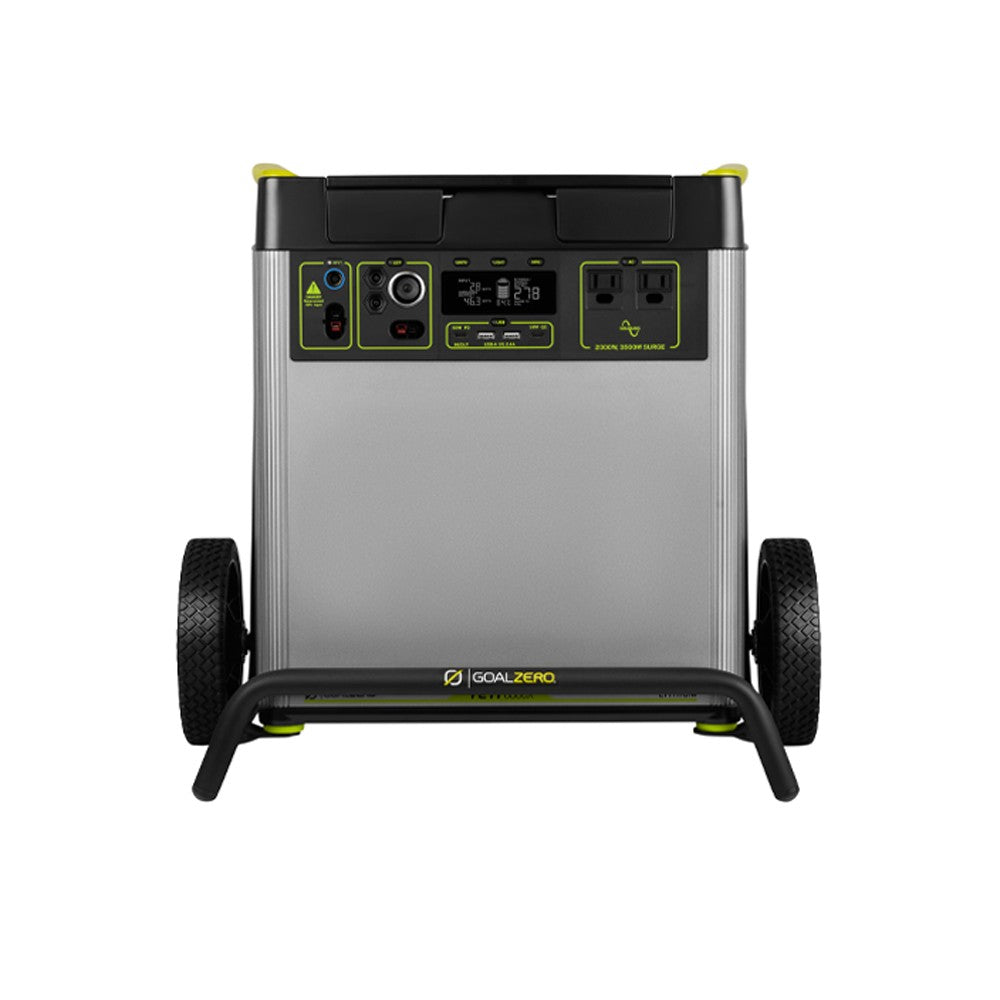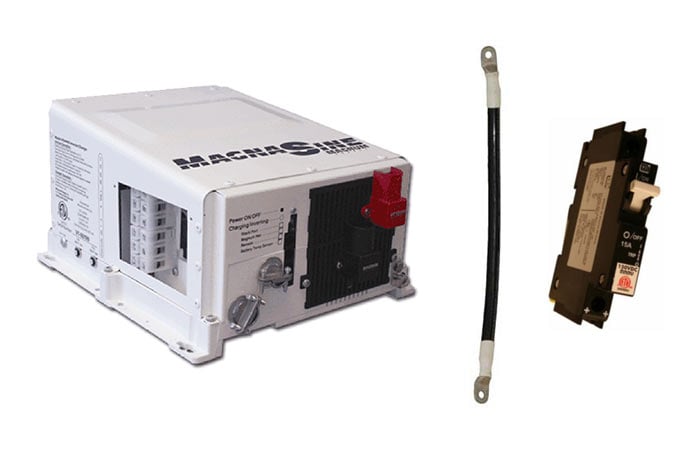The last couple months I've been working on adding solar power to the metal building we put up earlier this yera. I'm not done yet, but I'm getting close.
I wanted the panels to also shade the entry to the building. But I didn't want to risk bumping the posts with the tractor, so I poured concrete piers that extend 2.5 - 3 feet above ground.
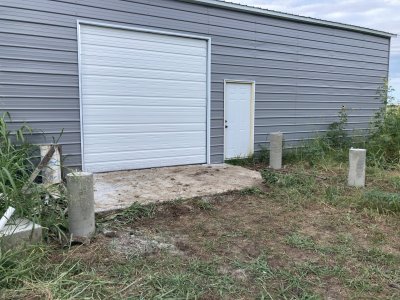
I learned that a tacoma with a 5 foot bed can haul 20 foot 2x10s
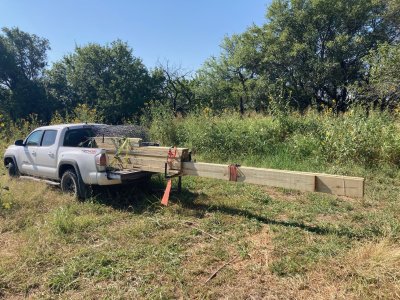
I cut mortise and tenons for the angled braces:
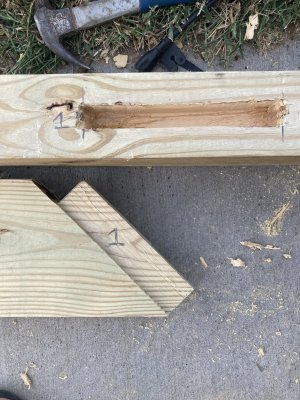
Here's the structure to hold the panels. 13' tall on the high side, 11' on the low side
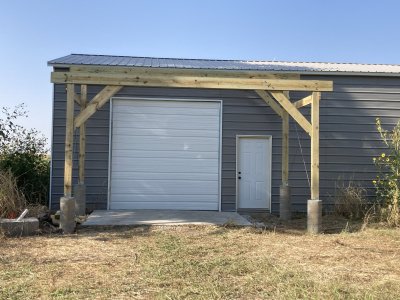
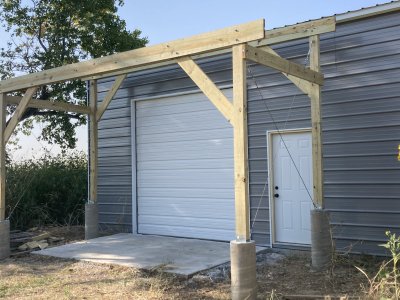
Normally the roof tin adds a lot of regidity, but I don't want to rely on the panels adding rigidity. So there's extra cables to stiffen it.
Where the cable attaches to the concrete piers, there's eye bolts welded to 5' sticks of 1/2" rebar. So we shouldn't have any uplift problems in the wind.

Then 12 305w panels, for 3660 watts total pv power
They're in 2 parallel strigs of 6 panels. Open circuit voltage is around 250v. max current is around 18 amps.


Inside wiring is mostly done. I have a small breaker box and a few circuits. The kill switch is for the PV power to the inverter/charge controller.
The breaker box has a generator inlet plug to connect to the inverter. Its pretty much ready to connect to the inverter and power up.
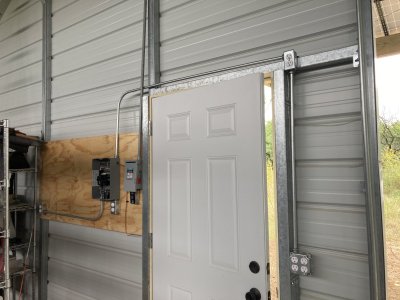
I'm making the batteries and inverter into a semi-portable unit. This evening I cut up and welded an aluminum server rack so its self standing.
The inverter will mount on the high side of it. Two 5kwh LifeP04 rack mount batteries will hang on the horizontal rails. There's room for 4 rack mount batteries if needed. The inverter & batteries will connect the building with twist lock plugs so I can easily disconnect it and set in the back of the truck to haul around portable power if needed.
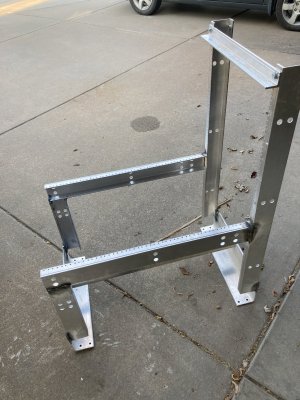
That's as far as I've gotten. The inverter came today. The batteries are supposed to arrive Monday. It should be done in a couple weeks.
I wanted the panels to also shade the entry to the building. But I didn't want to risk bumping the posts with the tractor, so I poured concrete piers that extend 2.5 - 3 feet above ground.

I learned that a tacoma with a 5 foot bed can haul 20 foot 2x10s

I cut mortise and tenons for the angled braces:

Here's the structure to hold the panels. 13' tall on the high side, 11' on the low side


Normally the roof tin adds a lot of regidity, but I don't want to rely on the panels adding rigidity. So there's extra cables to stiffen it.
Where the cable attaches to the concrete piers, there's eye bolts welded to 5' sticks of 1/2" rebar. So we shouldn't have any uplift problems in the wind.

Then 12 305w panels, for 3660 watts total pv power
They're in 2 parallel strigs of 6 panels. Open circuit voltage is around 250v. max current is around 18 amps.


Inside wiring is mostly done. I have a small breaker box and a few circuits. The kill switch is for the PV power to the inverter/charge controller.
The breaker box has a generator inlet plug to connect to the inverter. Its pretty much ready to connect to the inverter and power up.

I'm making the batteries and inverter into a semi-portable unit. This evening I cut up and welded an aluminum server rack so its self standing.
The inverter will mount on the high side of it. Two 5kwh LifeP04 rack mount batteries will hang on the horizontal rails. There's room for 4 rack mount batteries if needed. The inverter & batteries will connect the building with twist lock plugs so I can easily disconnect it and set in the back of the truck to haul around portable power if needed.

That's as far as I've gotten. The inverter came today. The batteries are supposed to arrive Monday. It should be done in a couple weeks.

